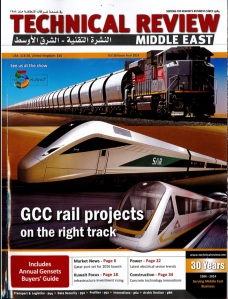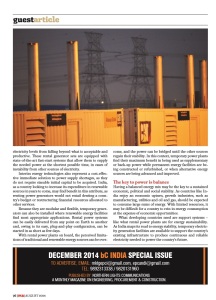One of the great thinkers in the modern history of the world, Abraham Lincoln, once said that the best way to predict the future was to create it. Change is inevitable, and we, humans, are constantly faced with the options of either effecting the change ourselves or being subject to the result of some other factor’s change.
Lincoln’s world-famous quote asserts that we have a say in what the future will hold for us, and that proactivity, as opposed to reactivity, will offer us our desired results.
This citation holds true till this very day, and still finds application in almost all facets of life. Each and every day, we, our relatives, our companies and even our governments are confronted with the compulsion to make decisions, selecting one or the other, to move forward. Oftentimes, the decision of the greater elements of the society sets off a domino effect, trickling the repercussion down to the nucleus. There may also be instances when the effects of the choices of the citizens escalate to the powers that be. In most cases, the relationship between the components of a society may not linear – there may be a constant push-and-pull or imposition-and-retaliation, or, at best, demand-and-submission.
Let us contextualize the foregoing discussion and throw the spotlight on the present energy situation in the Middle East. Let us examine the scenario through the prism of “choices”, and study how a marginal shift in behavior, say, leads to encompassing and durative effects.

Power at home
It may be hard to argue that it is the choice of the residents of the Middle East to raise the temperatures during summer to as high as 50°C, or more, at times. We may also consider that putting on air conditioners is a foregone conclusion, otherwise the living conditions will be utterly unbearable. We may say, however, that they have a choice in which AC unit to buy, or in considering the lifecycle cost of an electric product instead of its first cost. We could also be excused in saying that they also have a choice in how to take advantage of the power subsidy that they get from their governments, and on ascertaining how much electricity is essentially needed in their daily lives.
Studies cite that Saudis, for example, use nine times more electricity than the citizens of the four largest Arab countries. An individual in Saudi Arabia consumes around 8,200 kilowatt in an hour compared to an average 951 kilowatt an hour by an individual from Egypt, Algeria, or Morocco. Moreover, energy consumption per individual in Saudi Arabia was observed to have risen by three per cent in 2011 and by nine per cent in 2012. In the entire energy mix, the housing sector was estimated to be responsible for consuming 50% of the country’s total energy production.
To which, however, can one attribute this dizzying energy consumption average? Though not absolute, energy industry experts ascribe a large part the high electricity consumption to the poor energy efficiency of AC systems that the citizens of the region ultimately bring home. HVAC systems consume approximately 51% of all electricity production in the region, and this can reach up to 70% during the summer months. A considerable number of AC systems on offer are observed to have low energy efficiency ratios (EERs) despite the presence and promotion of energy efficiency standards in Middle Eastern countries. In most cases, air conditioners with low EERs are the cheapest, attracting buyers to give premium to the price they see on the tag than to the number of stars rating the performance of the unit.
What most users are not aware of is that, though units with higher EER are more expensive, they run more efficiently, reducing monthly power consumption, thus reflecting as less billed electricity. More technologically advanced units also operate longer without the need for repair or servicing, thereby cutting on maintenance costs.
Power in the country
To support the region’s daily electricity consumption, countries use an estimated millions of barrels of oil a day – notably one of the highest in the world.
Industry experts observe that the upward trend in the regional power demand is owing to the fact that most of the Middle Eastern countries’ development is based on energy-intensive industries, like construction, manufacturing, water desalination and oil & gas. The region’s economic conditions are also highly attractive to expatriates and foreign businesses, which causes the Middle East’s population to spike. Due to the region’s unique climate, residents in the Middle East live energy-intensive lifestyles in their homes, offices and means of transportation.
The energy situation in the region is predicted to take more challenging turns. In Saudi Arabia, for example, authorities are predicting that by the year 2020, the demand for electricity in the Kingdom would have increased by 30,000 MW. The World Energy Council supports this forecast and adds that the power consumption in the Middle East and North Africa can rise by as much as 80%-114% till 2050.
With over 50% of the world’s proven oil reserves and approximately 40% of the world’s gas, the foremost choice for the Middle East will be to rely on fossil fuels for decades to come. The challenge, however, is that fossil fuels are finite resources, and some countries in the region are already feeling the pressure of the current demand on power generation.
Just recently, industry experts in Iraq have reported that the country’s ability to generate electricity was being hampered by a shortage of gas supply to its power plants. Owing to this predicament, Iraq’s electricity supply is deficient by at least 3,000 MW, and major power plants, such as Nainawa, Al Mansurya and Rumaila remain idle. Experts say that the peak power demand in the country hits 16,000 MW compared to only 12,000 MW of available electricity.
According to industry studies, there may be real dangers looming in light of the observed depletion of the Middle East’s fossil fuel reserves, largely due to the continuous growth of the regional power demand. First, when the dedicated fossil fuel resource could no longer support the electricity requirement, power supply may become unstable and interruptions may ensure, resulting in myriad negative impacts to the region’s economy, business and people. A power interruption affecting critical facilities, like hospitals, airports, telecommunication towers, data centers and oil & gas installations, has the potential to put an entire country or region to a standstill, and in light of regional integration among Middle Eastern countries, consequences are sure to spill over national borders.
Second, market projections suggest that the persistence of the current energy requirement patterns in the region may render Middle Eastern countries vulnerable to economic and social instability. Let us take Saudi Arabia as an example: The unrestrained domestic fuel consumption in the Kingdom may hamper its ability to export oil within a decade, and considering that over 80% of the country’s government spending is dependent on oil, a downtrend in the Kingdom’s oil export activities may affect its capacity to provide for its residents’ needs in the future. On the other hand, a limited supply to other countries could lead to soaring prices of oil and other petroleum products, which will consequently distress all the industries that depend on it for production and operation.
With predicaments such as these, what choices are there to make?
At present, the governments of the Middle East have initiated tapping alternative sources of energy, like the sun, but designing, constructing, commissioning, testing and employing these technologies may take time and millions, if not billions, of Dollars in initial investment. Authorities have also launched conformity assessment schemes and energy efficiency & conservation programs aimed at modifying the attitude and the behavior of end-users towards energy consumption. Shifting the existing paradigm, however, may take decades, if not generations, and without curbing the present energy requirement, the region’s existing power resources may not be able to sustain it until the foreseeable future.

Empowered choice
While the long-term solutions are underway, countries in the Middle East may take a proactive approach in dealing with the region’s energy situation by hiring the services of rental power companies.
Hiring temporary power generation plants to bridge the demand and the supply of electricity yields many advantages, particularly when there is a foreseeable delay in the completion of permanent electricity facilities or when a considerable amount of power is immediately needed. Interim power generators are essential, particularly in times when the electrical grid is unstable or when power distribution networks are unavailable. The technology is also vital in mitigating the effects of planned or unplanned facility shut down or of load shedding.
Temporary power plants also have tested and recognized benefits in times of emergency, natural calamities & weather disturbance or intense seasonal demand. Disasters, unanticipated weather shifts and peak power requirements put unpredicted pressure on the region’s energy reserves, and addressing these ad hoc cases could mean taking power resources already allocated for other functions. Utilizing interim power generators in times like these not only instantaneously resolves the deficiency in supply but also precludes untoward and long-term effects that reorganization of energy resources may have to a wide array of industries.
Interim power generation facilities are sustainable, efficient and cost-effective solutions to a gamut of energy-related challenges. They respond to the questions of immediacy, viability and affordability. They are highly practical especially for short- and medium-term hire, as building permanent facilities for provisional usage may not be the most economical and workable choice. Temporary power plants offer utmost flexibility, scalability and modularity to fit in any situation, for any requirement, and to every budget.
The future is what you make it
Fossil fuels are non-renewable and the Middle East’s reserves are observed to be gradually diminishing. Alternative sources of energy, like the sun, may be abundant, but projects that could launch them at the forefront of power generation will take decades and a huge amount of country’s resources. Governments and utility companies in the Middle East are now offered an alternative choice to respond to the region’s power challenges aside from venturing into multi-billion Dollar energy facilities or pushing for a shift in existing consumption standards. They now have an option to hire interim power plants to bridge the power gap where needed and when needed. Now, the onus is upon us to make good use of the resources on offer and take the choices that would lead us to a future that we have envisioned for us, for our children and our children’s children.

*The foregoing article is based on an article originally published in Issue 4 2014 of Technical Review Middle East, published by Alain Charles Publishers.*
End
PRESS INQUIRIES
Robert Bagatsing
Altaaqa Global
Tel: +971 56 1749505
rbagatsing@altaaqaglobal.com



















